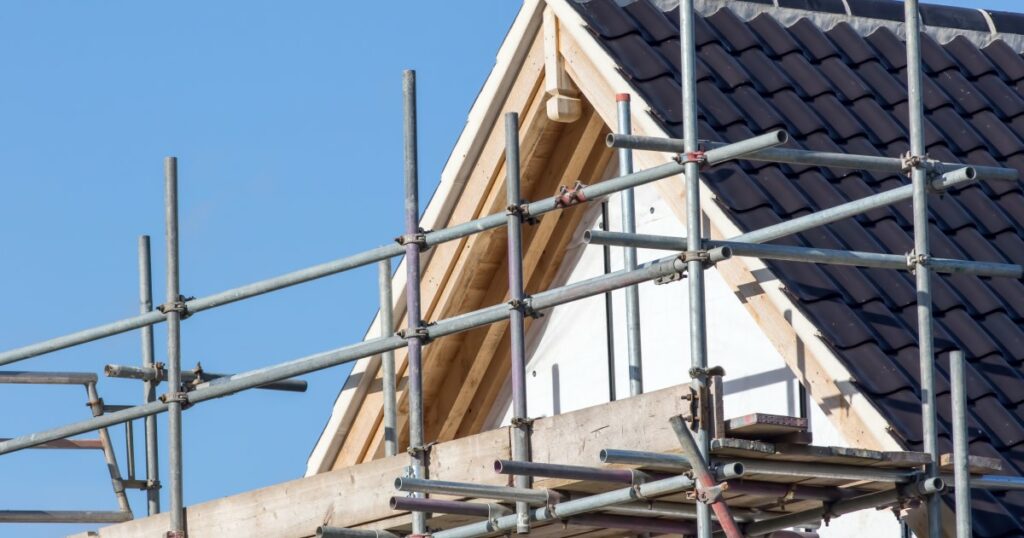What are your rights when a neighbours scaffolding has been erected on your side of a boundary?
More often than not, the best advice is to find a way to get on with your neighbours. If a dispute arises around issues involving where you live – there is always the potential for things to turn unpleasant.
It is not uncommon that the final outcome is that someone ends up selling and moving home. That is a real shame if it could have been avoided.
Not all neighbours are courteous
It can be a frustrating time when a neighbour is carrying out works to their property – whether that be maintenance or extension works.
The noise, deliveries and general untidiness can all test a neighbour’s patience. But most people will recognise these things can’t always be avoided – and can usually agree reasonable arrangements.
Sometimes, neighbours carrying out works simply don’t pay enough attention to the impact on their neighbour’s property and whether or not they have the all the rights required to carry out their intended works.
Scaffolding has been erected on my side of the boundary – what are my rights?
Scaffolding is often not given the attention that it deserves. If scaffolding has been erected on or oversailing a neighbour’s property, without obtaining any consent, then it could be trespass.
Where trespass is established, the party that erected the scaffolding could be required to remove it entirely. They might also be liable for damages and costs.
The consequence of that might be that the intended works might not be able to be completed – even if there is suitable planning consent for those work. Overall potentially making a situation like this a costly mistake.

Do my neighbours have the right to access my land during building works?
Depending on the nature of the works, the party seeking to erect the scaffolding could apply to court seeking an Access Order under the Access to Neighbouring Land Act 1992. That order can require a neighbour to permit access on certain terms the court consider to be reasonable.
Generally, however, this will only be available for maintenance rather than improvement works.
How can such issues be resolved and avoided?
A good solution can involve issuing formal consent set out in an Access Licence permitting scaffolding that might encroach onto neighbouring land.
The licence can be flexible and include suitable conditions of consent to protect the neighbour’s interest and retain some control. For example, limiting the period for consent (to make sure they get on with it) and protection around privacy, safety and any damage that could be caused to the neighbouring property.
Top tips for those looking to undertake building works
If you want to carry out works:
- Engage with your neighbour as soon as possible
- Listen and try to accommodate any reasonable concerns
- Ask your contractors to be courteous to your neighbours
- Formalise consent prior to starting any works that require rights
- Applying to court for an Access Licence should be a last resort
Top tips for neighbours being affected
If your neighbour is carrying out works:
- Establish to what extent the works will require any access/encroachment on your property
- Think about how such works might impact your property during the works period
- Think about what reasonable steps could be taken to address your concerns
- Seek to establish written arrangements and formal consents that reflect reasonable terms
How Moore Barlow can help
If you have a dispute concerning property or land, then strategic advice at the earliest stage can help you resolve issues in the most cost-effective way.
We have considerable experience advising residential and commercial landlords, developers, lenders, property tenants, private individuals and landowners.







